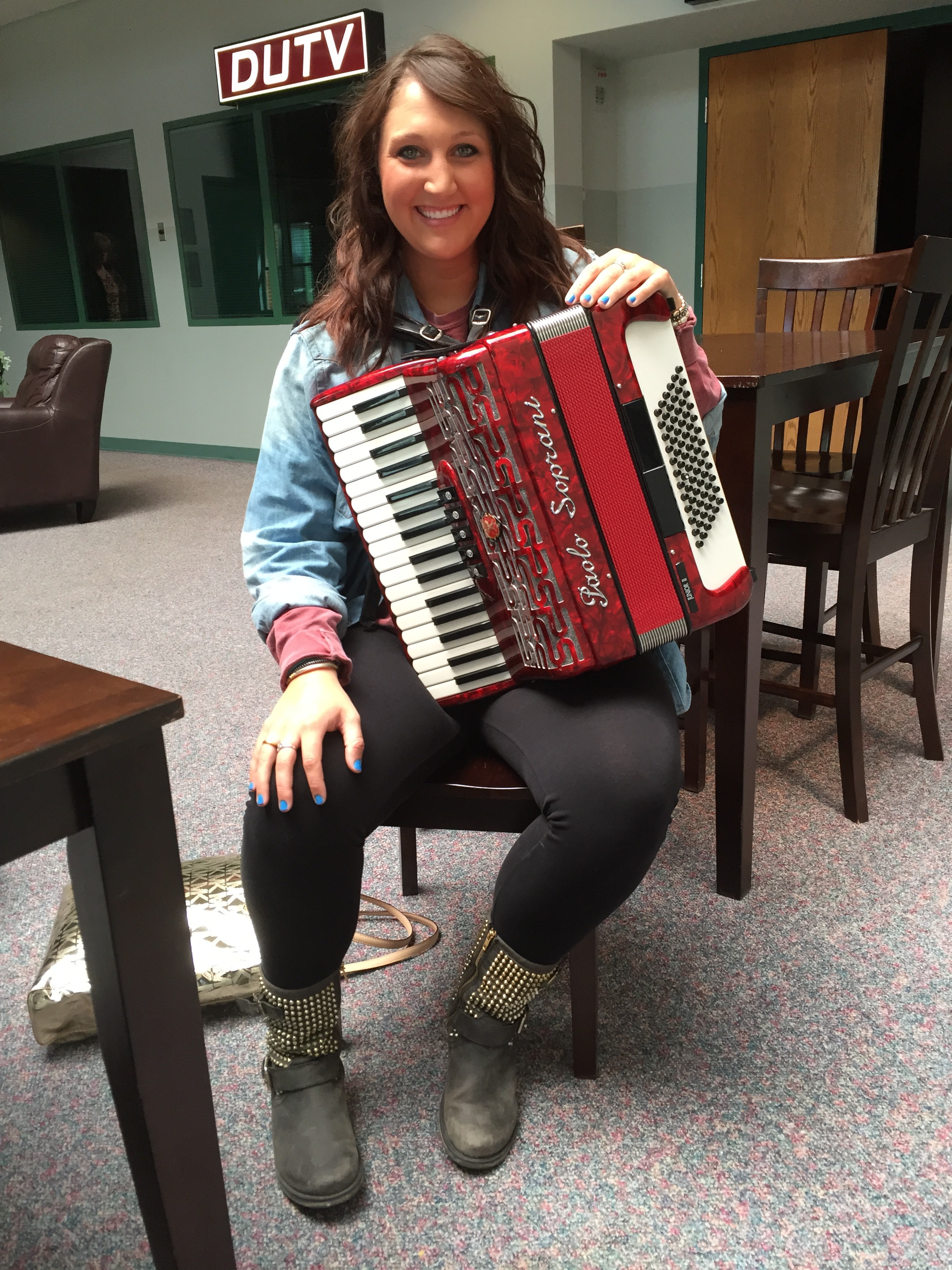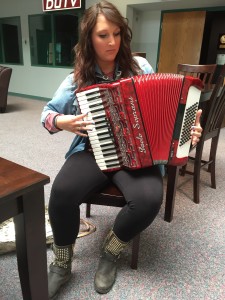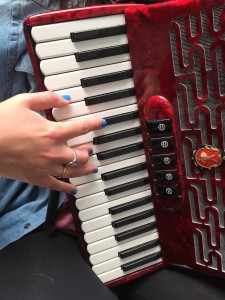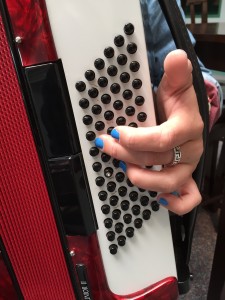

The sound bite above comes from the bellows of Natasha Sanford’s accordion.
Sanford is a seasoned accordionist and has the chops to prove it. She won first place at the National Accordion Championship in Ireland.
She credits her skill to the St. Louis Irish Arts organization in St. Louis. Sanford started out on the pennywhistle at age 5 and then graduated to the accordion at 7. She has been playing ever since.
Feel free to let her traditional Irish jig accompany her tips for budding accordionists.
Music reading not required
A possible deterrent for learning a new instrument is the inability to read music. But Sanford squashes that notion. “I never learned how to read music through this organization,” she says. “We just do notation, so just A, B, C, D, E, F, G. You read the notes, but you learn the rest by ear.”
In between songs, Sanford explains that in Ireland, accordion music is passed down like a story: You listen to a song and eventually pick it up on your own. Although the accordion is a single-person instrument, it takes a community to continue the songs.
Sanford’s experience was modeled after the Suzuki Method, where listening by ear and encouragement from peers are essential. However, this method can be recreated and applied to your own accordion skill-building with some practice and reassurance.

You may be uncomfortable reading music, but you should get comfortable with the parts of an accordion and how to use each hand.
Right hand: melody
“Melody is played by the right hand on the side with piano keys,” she says, offering a tour of her own accordion. “You just want to learn the scales on your right hand and just kind of learn where all the notes are.”
After you’ve got the hang of that side, it’s time to implement the left hand.
Left hand: chords

“Your left hand is the chords. So those are just buttons,” Sanford explains as she motions to six rows of little domes under her fingers. She points out one dazzling button in particular. “This one designates ‘C’. Most people just have it indented, but I have a rhinestone.”
She cautions: “If you’re just starting out, you don’t learn them together.” Sanford advises to begin learning “really basic notes from your index finger and your middle finger and progress from there.”
Put them together
The final step is combining both hands and making complementary sounds and hand movements.
Sanford says accordions are actually reed instruments. “You pull the bellows in and out, and that’s what makes the sound pass through the reeds which are in the inside of your accordion.”
The woman with a sparkle-buttoned accordion then advises finding your own style. “Bounce around and play in a different rhythm, or find a style you like.”
Sanford personally likes to play her traditional Irish music a little less traditionally. “I like to use the bass as the fun stuff.”
As the last bit of air leaves the bellows, Sanford offers her last piece of advice: “Don’t give up. There’s different concepts you have to put together, so don’t overwhelm yourself and take it one step at a time. It’s fun. And you should have fun doing it.”